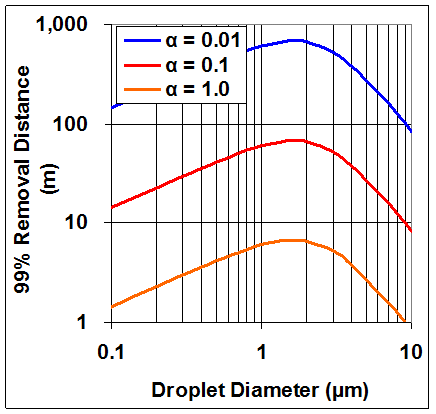Tech Tip
Many professionals assume that the smallest oil droplets will transport the farthest during subsurface substrate injection. However, this is not always true. Water treatment engineers have studied particle (and droplet) removal in sand filters for decades. They have learned that particle removal is a function of the frequency of particle-sand grain collisions and the probability (α) that the particle will stick, when a collision occurs (Ryan and Elimelech 1996; Logan 1999).
Brownian motion causes very small droplets (D50> 4 µm) have lots of collisions due to their size and density differences. The lowest collision frequency occurs for droplets between 0.5 and 2 µm.
 Neutral and positively charged oil droplets will stick to negatively charged sediment particles (α between 0.1 and 1). However, negatively charged oil droplets don’t stick to the negatively charged sand grains (α<0.1) and migrate much farther (Coulibaly et al. 2006).
Neutral and positively charged oil droplets will stick to negatively charged sediment particles (α between 0.1 and 1). However, negatively charged oil droplets don’t stick to the negatively charged sand grains (α<0.1) and migrate much farther (Coulibaly et al. 2006).
The figure shows droplet transport distance before 99% removal for different values of α and droplet diameter. Droplets travel the farthest when they are negatively charged (α < 0.1) and D50 between 0.5 and 2 µm.
Smaller is not always better …
